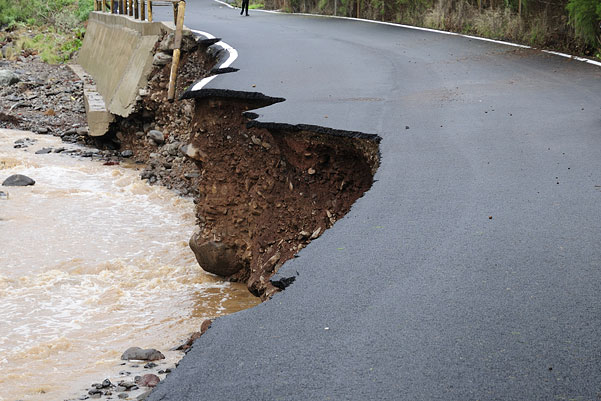Hurricane Sandy currently shows the impact natural catastrophes can have. "Due to the broad public discussion of the debt crisis and a so far relatively mild catastrophe loss year in 2012, climate change and natural catastrophes have again taken a back seat on the political and public agenda," observes Amer Ahmed, CEO of Allianz Re.
Allianz highlights the implications of underestimating the increasing risks of natural catastrophes. While socio-economic factors play an important role, which are often underestimated, it is expected that the frequency and severity of weather related events will further increase through globalization together with the impact of higher values and concentrations of exposures. "We therefore have to increase our efforts to implement mitigation measures together with the public sector to be prepared for increasing storm, heavy rain and hail activity, which is also likely to be observed in Germany in the future. If we don't adjust to these developments, economic and insurance losses will further increase in many regions across the globe," Ahmed adds.
Payouts to customers for weather-based insurance losses have risen by a factor of 15 in the past 30 years. But natural disasters don't just cause major damage locally – more and more often, they have been responsible for worldwide chain reactions, because of global economic interdependence. Accounting for 51 percent of such disasters, weather-related events like the flood in Thailand are the most common cause of supply chain disruptions. A particular cause for concern are regional supplier clusters as common in the global automotive and electronics industries: "Disruptions at major suppliers because of a local disaster event can affect companies worldwide, and consequently hit many of our policyholders," explains Volker Muench, Global Head of Strategy and Development Property at Allianz Global Corporate & Specialty (AGCS). "Calculating the accumulation of risk is a lot more complicated than it used to be. Which is why we need more insight into our industrial clients' supplier risk management."
Limits of insurability – Lessons learnt
Insurers' economic task is to hedge increasing risks and safeguard sustainable global growth. "One key to solutions is our lessons learned from the past," says Richard Hewitt, an Analyst and Senior Consultant at Allianz. "Retrospectively we can see where we recognized trends too late, overlooked customer needs, or underestimated interdependencies." For example, business disruptions after the flood in Thailand and the earthquake in Japan in 2011 made it clear that companies and their insurance partners had too little data about the risks inherent in global supply chains.
A look back, and a survey of Allianz experts, also shows that the ranking of risks has hardly changed since 1990. Natural disasters were the biggest insurable risk then, and still are. "We'll be seeing more of the same risks, more natural disasters, with more complex losses," says Hewitt.
In 1992, Hurricane Andrew in Florida was insurers' most expensive natural catastrophe to date, at 25 billion US dollars. Andrew pushed insurers to the limits of their risk bearing capacity, and triggered new developments in every segment: new disaster simulations and risk models were developed, more data was gathered and analyzed, risks were spread and better diversified, reinsurance capacity was expanded, and the capital market began to be tapped with what came to be known as "Nat Cat" (natural catastrophe) bonds. When Hurricanes Katrina, Rita and Wilma, in 2005 and 2006, caused 97 billion US dollars in losses – quadruple the toll taken by Andrew – the new tools proved they had been effective. Whereas Andrew had contributed to twice as many insurer insolvencies as a normal year, the figure after Katrina, Rita and Wilma combined was 40 percent below this normal.

